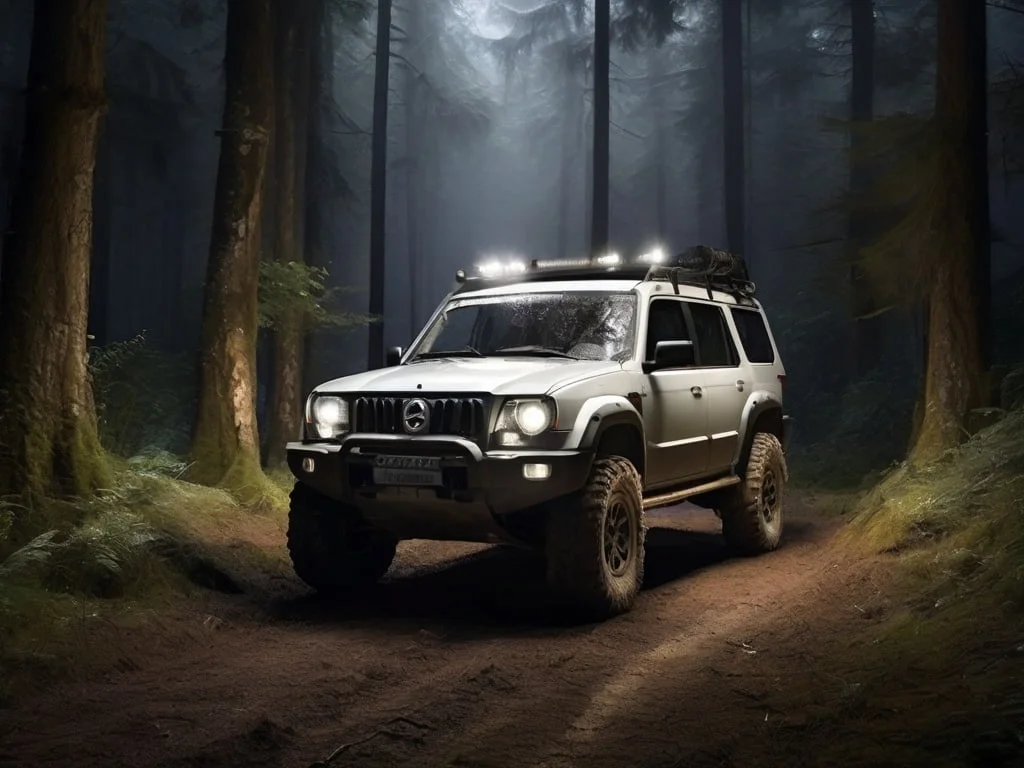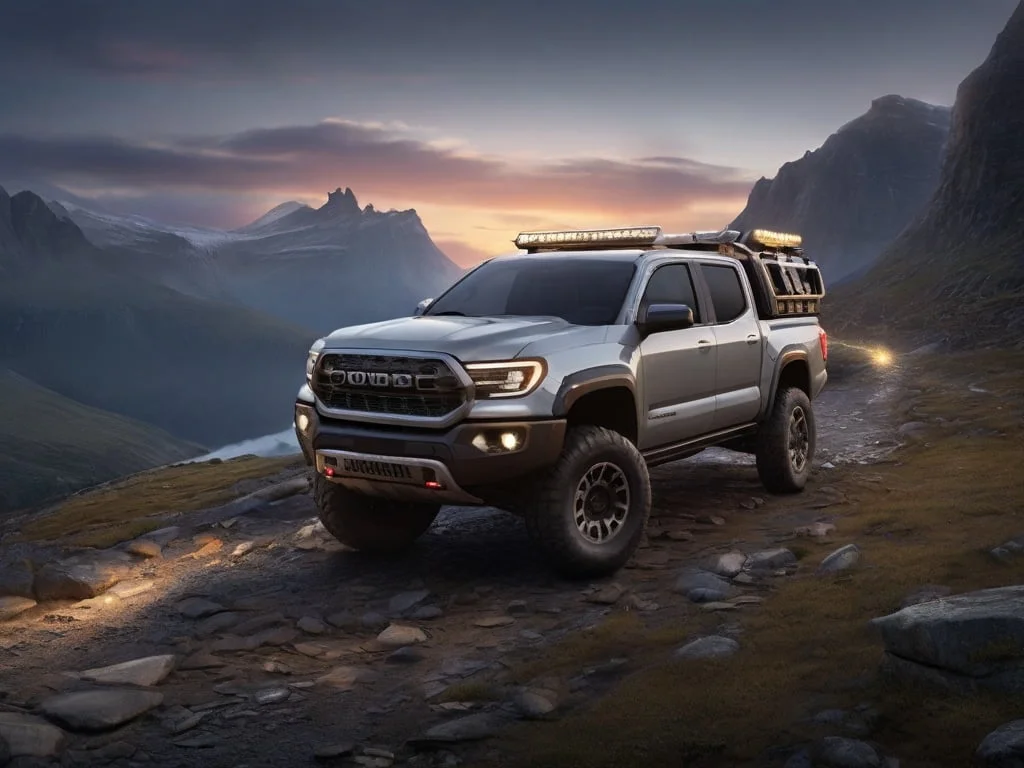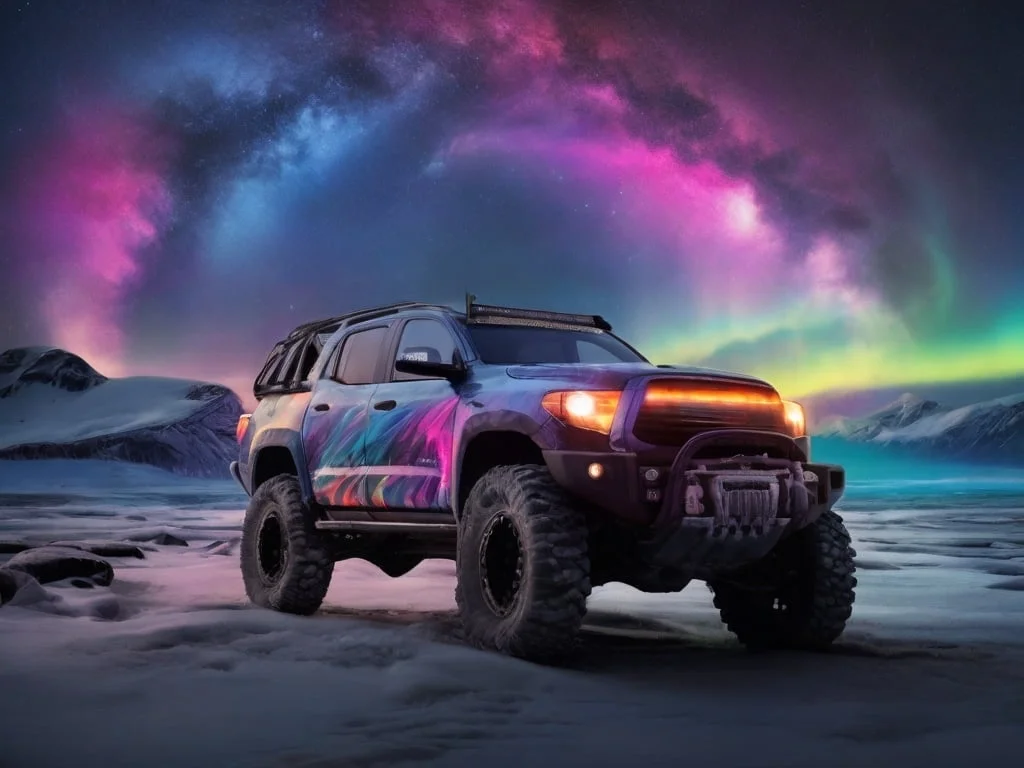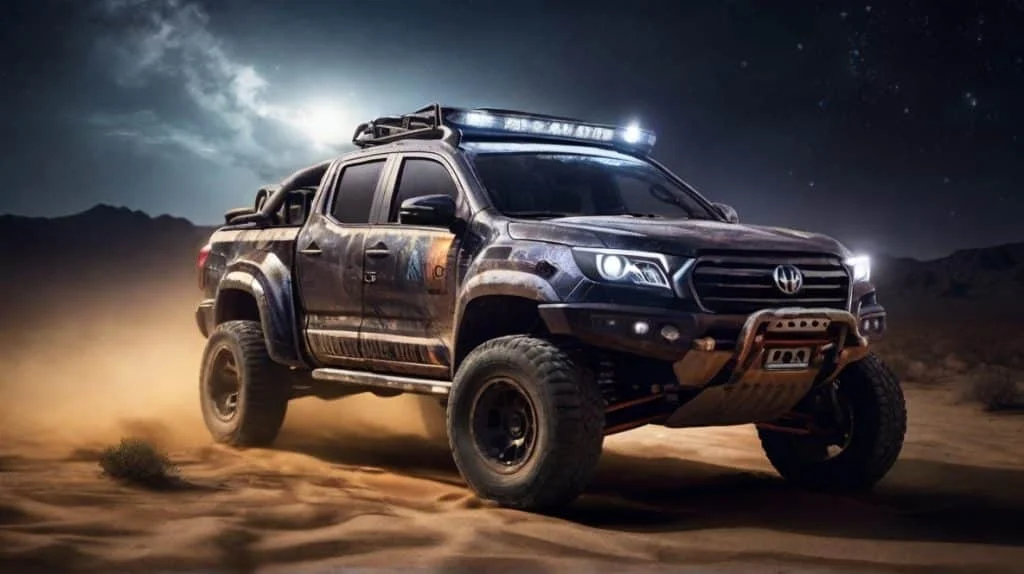Off-Road Lighting Guide provides excellent visibility for night driving and rough terrain travel. This includes special mounting lights.
Without adequate light, once the sun goes down, off-road travel can quickly go from fun to disaster. This makes a comprehensive off-road lighting guide an essential tool for any enthusiast looking for safety and performance. With a variety of options including spotlights, dive lights, recessed lights, and rock lights, choosing the right system is an informed decision.
The alignment of your vehicle, the specific terrain, and the lighting conditions play an important role in the choice. An effective guide will help guide you through the technical details, and ensure that you equip your car with lights that not only enhance its beauty but more importantly put functionality and safety first not on the road. The goal is to see uneven surfaces when traveling at night, making any off-road challenge a well-lit success.
Illuminating The Trail Ahead
When the pavement ends and the terrain gets tough, every off-road enthusiast knows that the right lighting can make all the difference. Illuminating the Trail Ahead is not just about seeing the path, but also about foreseeing challenges and obstacles that lay hidden in the darkness of uncharted terrains.
Importance Of Adequate Lighting
Adequate lighting is essential for several reasons:
- Safety: It helps avoid potential hazards.
- Visibility: It extends the range of sight beyond regular headlights.
- Nighttime Off-Roading: It makes night adventure possible.
- Durability: Off-road lights are built to withstand rugged use.
Core Differences Between Off-road And Regular Vehicle Lighting
| Feature | Off-Road Lighting | Regular Vehicle Lighting |
|---|---|---|
| Strength | More powerful, intense beams | Softer, more diffused beams |
| Durability | Designed for impact and vibration resistance | Standard resistance to everyday use |
| Functionality | Versatile with a focus on long-range vision | Primarily for well-lit, paved roads |
| Mounting Options | Various, including roof and grille | Limited, mainly front-facing |
Selecting the right off-road lighting is crucial to conquer the night. Whether it’s LED light bars, spotlights, or floodlights, each provides unique benefits to cast light over the trails.

Types Of Off-road Lights
Choosing the right off-road lights is key to a safe and enjoyable adventure. Different terrains and conditions need specific lighting. Explore the types to find the best fit for night rides.
Spotlights For Distance
Spotlights are essential for seeing far ahead. They create a focused beam. This beam reaches far into the distance. It helps in spotting obstacles early. A spotlight beam is narrow and intense. It is perfect for high-speed trails. Spotlights give clarity at long range.
Floodlights For Breadth
Floodlights provide a wide angle of light. They help see the big picture. Floodlights illuminate the area right next to your vehicle. This type of light shows more of the trail’s edges. It enhances safety on tight paths.
Combination Beams For Versatility
Combination beams offer the best of both worlds. They combine spotlight and floodlight features. This beam is versatile. It is suitable for various off-road scenarios. Drivers gain both distance and breadth in illumination.
Choosing The Right Lights
Embarking on an off-road adventure? Your journey isn’t complete without proper lighting. As night falls or as you navigate through difficult terrains, the right off-road lights become essential. This guide highlights key considerations for selecting the perfect lights to illuminate your path.
Brightness And Lumens
When venturing into the dark, bright lights are vital. Lumens measure light output. More lumens mean more brightness. Choose lights that offer high-lumen output to ensure your way is well-lit.
- 1,000 – 2,500 lumens: suitable for subtle lighting needs.
- 2,500 – 5,000 lumens: ideal for clear visibility on trails.
- Over 5,000 lumens: perfect for pitch-dark environments.
Beam Patterns
Beam patterns affect how light is distributed. Different patterns serve various off-road scenarios. Spot beams reach far, while flood beams cover wider areas. Combo beam patterns provide a versatile solution combining both spot and flood beams.
| Pattern Type | Best For |
|---|---|
| Spot Beam | Long-distance visibility |
| Flood Beam | Broad area illumination |
| Combo Beam | Multi-purpose use |
Construction And Durability
Durable lights withstand harsh conditions. Look for lights with sturdy construction such as aluminum housing. Check for waterproof, shockproof, and dustproof ratings. IP67 and above is ideal for off-road resilience.
Compatibility With Your Vehicle
Ensure the lights fit your vehicle before purchase. Consider mounting options and the electrical system compatibility. Some lights may require additional brackets or wiring kits. Consult the manufacturer’s specifications to guarantee a perfect fit.
- Measure mounting space on your vehicle.
- Check the voltage compatibility with your system.
- Confirm the mounting hardware suits your vehicle.

Installation And Positioning
The thrill of off-roading often extends into the night, making effective lighting crucial for safety and visibility. Achieving the perfect illumination set-up involves strategic installation and positioning of your off-road lights. This guide explores optimal mounting locations, wiring essentials, and tips to dodge common mishaps while installing your off-road light system.
Mounting Locations And Their Advantages
Positioning your lights effectively is key to a well-lit off-road experience. Here’s a breakdown of popular mounting points and their benefits:
- Front Bumper: Offers increased visibility for the immediate road ahead.
- Rear Bumper: Enhances backward visibility, aiding during reversing.
- Grille or Hood: Provides a broader light spread for obstacle detection.
- Roof-mounted: Maximizes long-range visibility and minimizes shadows.
- Side-mounted: Illuminates trail edges, preventing scrapes and collisions.
Wiring Essentials
Connecting your lights securely ensures they function reliably. Use this checklist for a safe wiring process:
- Use the correct wire gauge.
- Install a switch to operate lights independently.
- Secure connections with waterproof connectors and heat-shrink tubing.
- Protect wiring with conduit or loom where possible.
- Include a relay to prevent switch overload.
- Add a fuse to safeguard against shorts.
- Follow the manufacturer’s wiring diagram meticulously.
Avoiding Common Installation Pitfalls
Common installation errors can hamper performance and safety.
Here’s how to sidestep frequent missteps:
- Avoid drilling without spot-checking for wires or components.
- Do not overlook grounding properly to the vehicle’s frame.
- Never leave exposed wiring that can lead to short circuits.
- Bypass routing wires close to hot or moving parts.
- Keep lights aligned to prevent blinding other drivers.
- Check local laws to ensure your setup complies.
Legal And Safety Considerations
Exploring rugged terrains at night calls for robust lighting. Yet, before venturing into the wild, one must adhere to legal and safety directives. Off-road lighting isn’t just about piercing through the darkness; it’s about ensuring safety and compliance with the law. Enthusiasts must consider the implications of their lighting choices.
Understanding Off-road Lighting Regulations
Every region has distinct regulations concerning off-road lighting. Understanding and complying with these laws is essential. Unauthorized lighting could cause legal issues. Below are key points to familiarize oneself with local rules:
- Check Vehicle Codes: Look up state-specific vehicle codes related to auxiliary lighting.
- Lighting Limits: Note the legal limit for the number of lights and brightness.
- Color Restrictions: Identify permissible light colors; typically, white and amber are acceptable.
- Cover Requirements: When not off-roading, light covers may be mandatory.
Safe Usage Tips
Safety always takes precedence while using off-road lighting. Here are straightforward tips for secure operation:
| Aim Correctly: | Adjust the beams to minimize glare for oncoming traffic. |
| Moderate Use: | Use the lights only when necessary to prevent battery drain. |
| Regular Checks: | Inspect lights for damage or misalignment regularly. |
| Emergency Prep: | Carry spare bulbs and repair tools for unforeseen issues. |
Respecting Fellow Off-roaders And Wildlife
Off-road lighting is not just about your journey. It’s about coexisting with others and the environment:
- Dim Lights for Oncomers: Reduce brightness when facing other off-road vehicles.
- Minimize Disturbance: Use lights sparingly to avoid scaring wildlife.
- Directional Lighting: Focus lights downward to lessen the impact on others.
- Maintain Visibility: Ensure your vehicle is visible without overwhelming others.

Maintenance And Upkeep
Proper maintenance keeps off-road lights bright and reliable. Dirt and rough conditions take a toll. Frequent checks and care to ensure optimal performance. Follow these tips to keep lights ready for any adventure.
Cleaning And Care Tips
Keep your off-road lighting in top shape with regular cleaning. Dirt and mud can block light output. Follow these steps:
- Turn off the lights and let them cool.
- Use a soft cloth and mild soap.
- Avoid harsh chemicals that can damage the lens.
- Rinse with water and dry completely.
Check for loose bolts or damaged mounts during cleaning. Secure any loose parts to prevent loss or damage.
Troubleshooting Common Issues
Encounter a problem? Common issues are often easy to fix. Look for these signs:
| Issue | Possible Cause | Quick Fix |
|---|---|---|
| Flickering light | Loose connection | Check wiring and connectors. |
| Dim light | Dirty lens or low-power | Clean the lens and check the voltage. |
| Non-functional light | Burnt bulb or fuse | Replace the bulb or fuse. |
Note: Refer to your lighting system’s manual for specific guidance.
Upgrading Your Lighting System
Upgrades improve visibility and safety. When choosing a new lighting system, consider these factors:
- Compatibility with your vehicle.
- LED lights for efficiency and longevity.
- Higher lumen output for better brightness.
Invest in quality wiring and switches for new installations. Proper installation ensures durability and performance.
Frequently Asked Questions Of Off-road Lighting Guide
What Are The Best Off-road Light Types?
Off-road lighting comes in various types including LED light bars, spotlights, floodlights, and rock lights. LED light bars are the most popular for their durability and brightness. Spotlights focus narrowly, while floodlights cast a wide beam. Rock lights illuminate the vehicle’s underside.
How Do I Choose Off-road Lights?
When choosing off-road lights, consider the light’s brightness, beam pattern, and durability. Brightness is measured in lumens, with higher lumens indicating more light. Beam patterns such as spot or flood serve different off-road conditions. Choose lights with sturdy construction to withstand harsh terrain.
Can Off-road Lights Be Used Legally On Streets?
Off-road lights are often too bright for street use and may be illegal depending on local regulations. It’s essential to check with local laws before using off-road lights on public roads. They are usually permitted only when off-road or on private property.
What Is The Difference Between Spot And Flood Off-road Lights?
Spot off-road lights produce a focused, narrow beam, ideal for distance visibility. Flood lights have a wider beam spread, which illuminates a larger area closer to the vehicle. This makes flood lights better for general area lighting, while spots are preferable for specific, far-reaching illumination.
Conclusion
Navigating the wilderness at night demands proper lighting. This guide aims to illuminate your off-road adventures, showcasing top lights for safety and visibility. Remember, the right setup can define your journey’s success or failure. Invest in quality, durable options; the wild awaits, well-lit and welcoming.
Safe travels!


